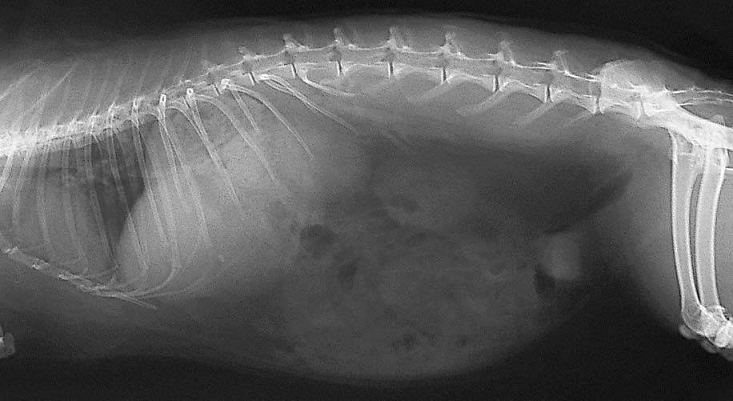Difference between revisions of "Rabbit Medicine and Surgery: Self-Assessment Color Review, Second Edition, Q&A 18"
Jump to navigation
Jump to search
(Created page with " {{CRC Press}} {{Student tip |X = a good thorough question, using species specific and general RG skills.}} <br><br><br> centre <...") |
|||
| (One intermediate revision by the same user not shown) | |||
| Line 4: | Line 4: | ||
|X = a good thorough question, using species specific and general RG skills.}} | |X = a good thorough question, using species specific and general RG skills.}} | ||
<br><br><br> | <br><br><br> | ||
| − | [[File: | + | [[File: Rabbit_Medicine_and_Surgery_Q8.png|centre]] |
<br> | <br> | ||
<br> | <br> | ||
| Line 25: | Line 25: | ||
</FlashCard> | </FlashCard> | ||
| − | To purchase the full text with your 20% off discount code, go to the [https://www.crcpress.com/9781498730792 CRC Press] Veterinary website | + | To purchase the full text with your 20% off discount code, go to the [https://www.crcpress.com/9781498730792 CRC Press] Veterinary website. |
[[Category:CRC Press flashcards]] | [[Category:CRC Press flashcards]] | ||
Revision as of 11:24, 22 November 2018
| This question was provided by CRC Press. See more case-based flashcards |

|
Student tip: This case is a good thorough question, using species specific and general RG skills. |
A 7-year-old entire female Dutch rabbit, housed indoors, presents with weight loss, anorexia and acute-onset severe dyspnoea and rapid fatigue. The rabbit is thin, alert but weak. Mucous membranes are cyanotic but capillary refill time and pulse are normal. Abdominal palpation is tense. Lung sounds are generally decreased. There is a poor response to oxygen therapy. Lateral and dorsoventral radiographs are shown (see image).
| Question | Answer | Article | |
| What radiographic changes are present and what is the most likely diagnosis given the signalment and clinical signs? | The radiographs show a nodular interstitial pattern of the lung field. The most likely diagnosis in a 7-year-old entire female rabbit is metastatic spread from a uterine adenocarcinoma. Abdominal radiography and ultrasonography revealed a large mass in the uterus.
|
Link to Article | |
| What differential diagnoses would you consider in a 7-year-old rabbit with these clinical signs? | Differential diagnoses for lower respiratory tract disease include: pneumonia; abscesses associated with pleuropneumonia; pleuropneumonia (secondary to infection with Pasteurella multocida, Pseudomonas aeruginosa, Staphylococcus aureus, Bordetella bronchiseptica, Mycobacterium bovis, M. tuberculosis, Moraxella bovis, Francisella tularensis and Yersinia pestis); primary thoracic neoplasia (thymoma); and secondary metastatic disease. Pleural effusion has been seen with cardiovascular disease (cardiomyopathy, valvular disease, pericarditis and atherosclerosis) and corona virus infection but this has not been reported as a spontaneous natural infection in pet rabbits.
|
Link to Article | |
| What is the prognosis? | The prognosis is grave and in this case the rabbit was euthanased.
|
Link to Article | |
| What preventive measures are there to reduce the incidence of this condition? | Ovariohysterectomy before the rabbit is 2 years old will reduce the incidence of this condition in female rabbits. Dutch, French Silver, Havana and Tan breeds older than 4 years of age have a 50–80% incidence of uterine adenocarcinoma. Metastases to local tissues, lungs, liver, brain and bones may occur within 1–2 years.
|
Link to Article | |
To purchase the full text with your 20% off discount code, go to the CRC Press Veterinary website.
